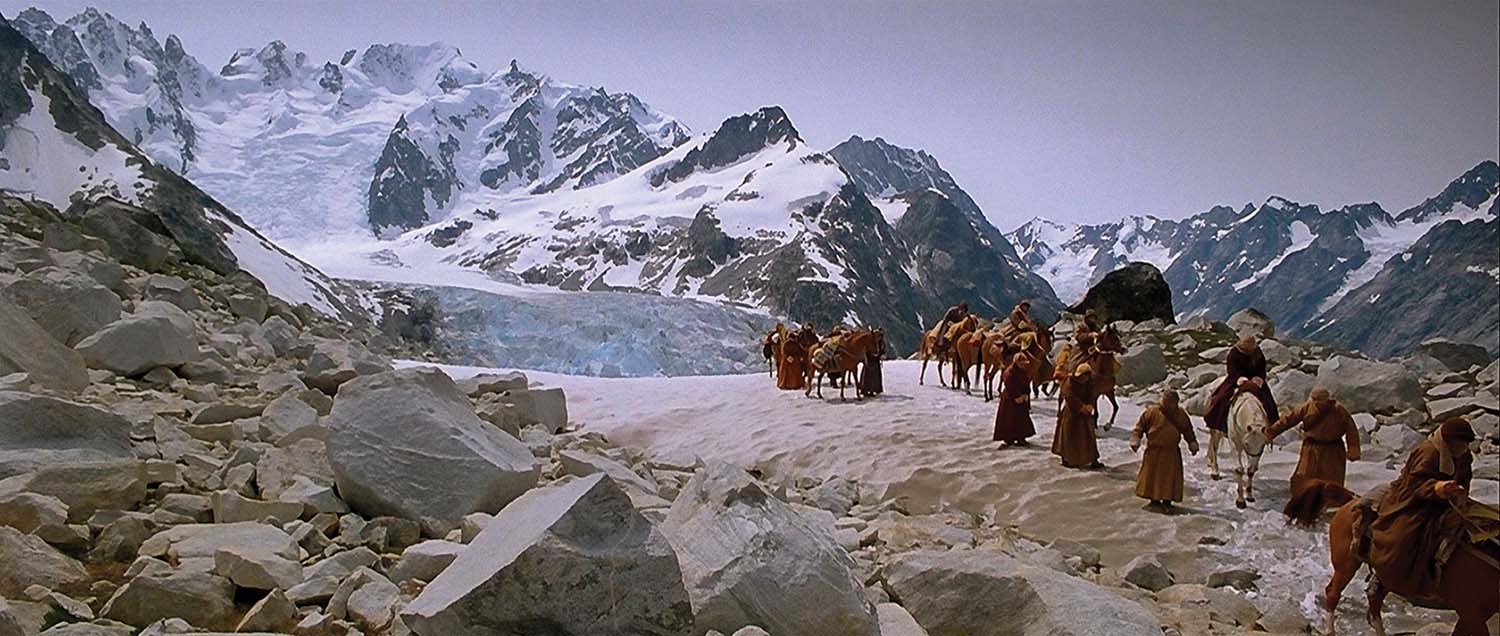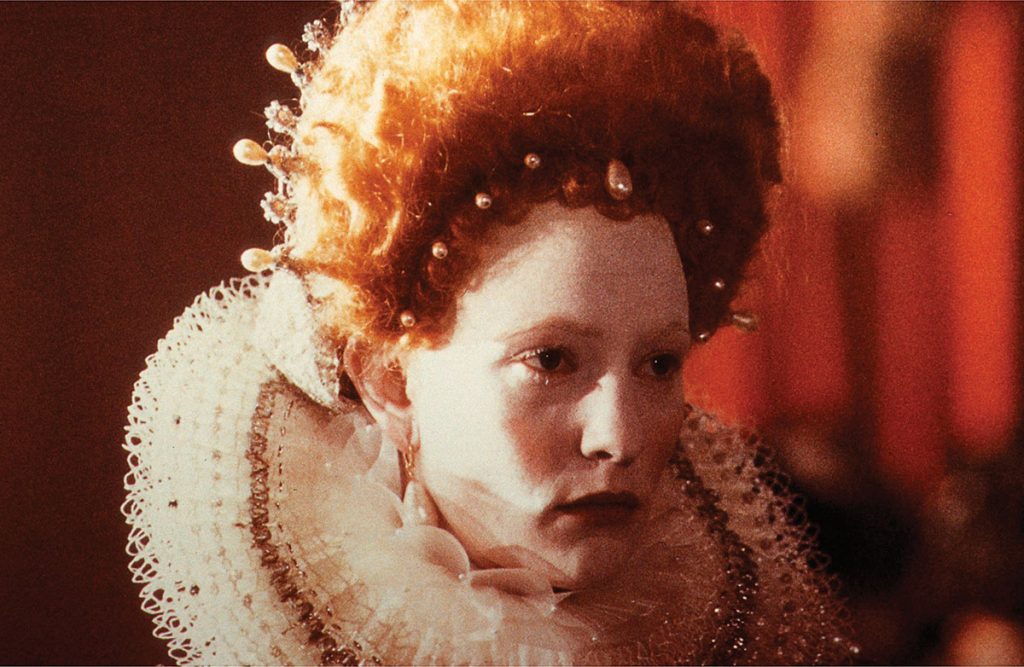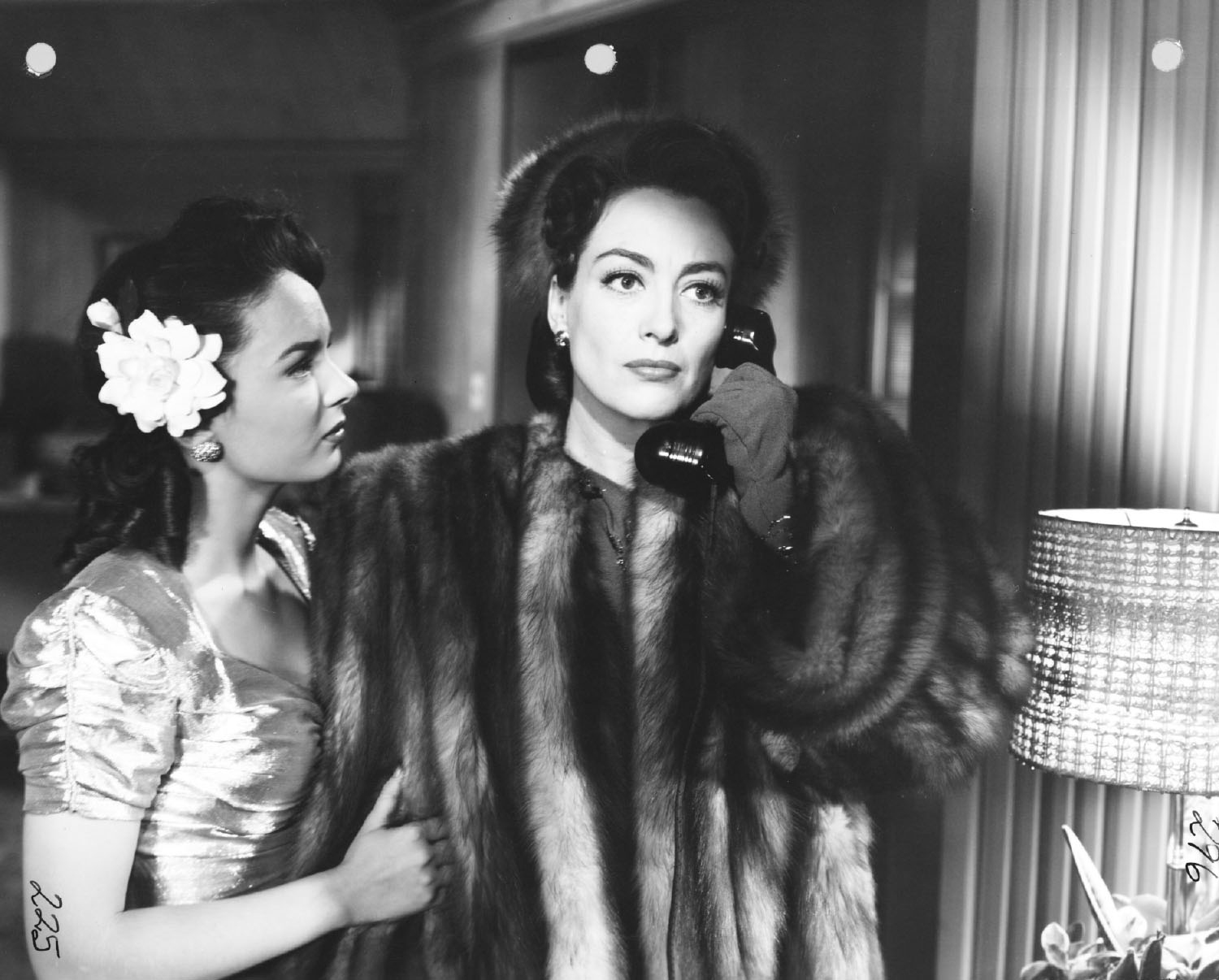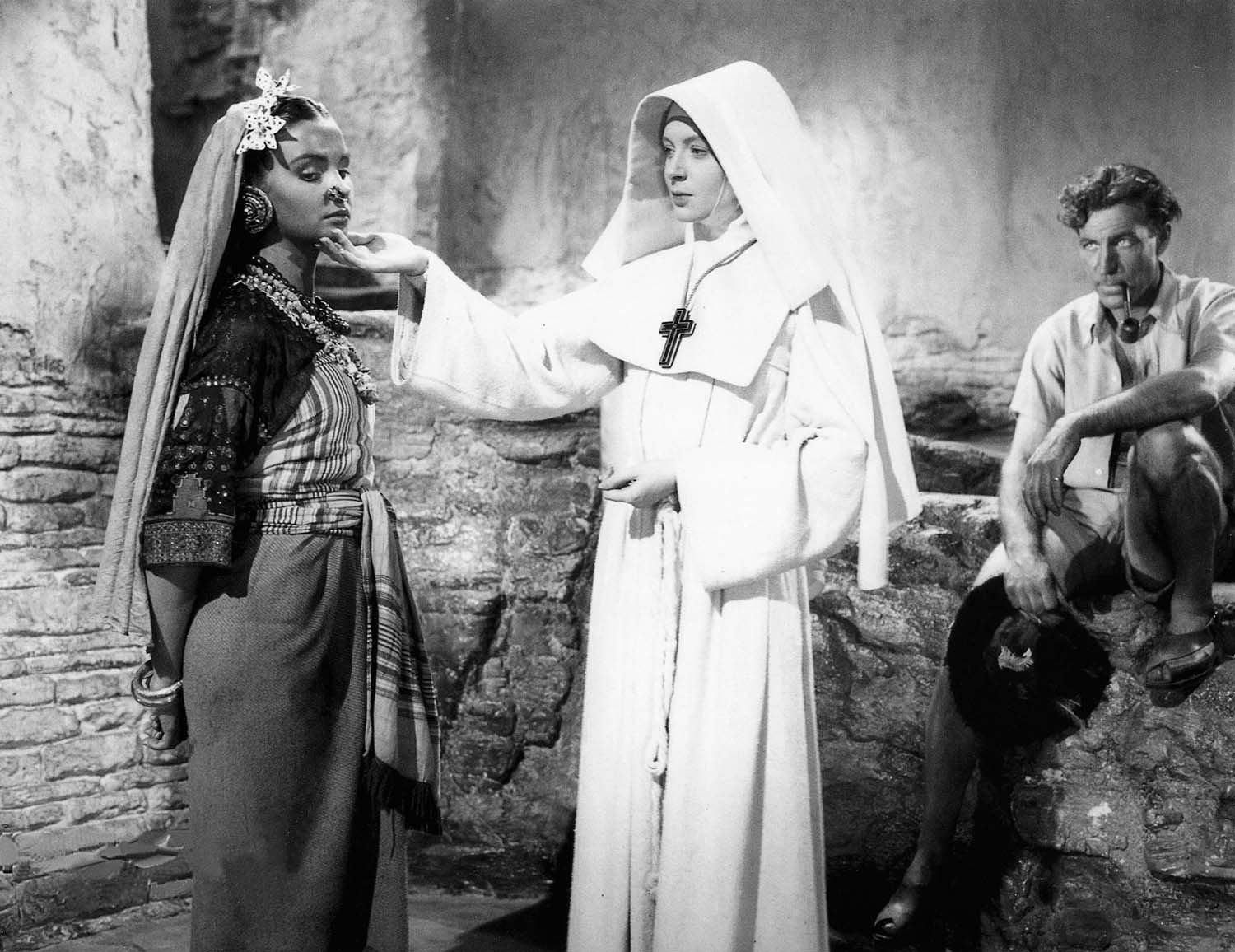
In the spectacular epic Kundun, the Dalai Lama must flee his home in mountainous Tibet and seek refuge in India.
Even if you haven’t read his six books, or don’t remember that he won the 1989 Nobel Peace Prize, most Americans have some idea who the Dalai Lama is. (Dalai Lama means “Ocean of Wisdom.”) They know his shaved head and maroon robes indicate he’s a monk (a Tibetan Buddhist), that he is the reincarnation of somebody (read on), and that almost everybody likes him (except the Chinese; more on that later). The general impression is, if His Holiness is not praying for peace among rallies of thousands, he’s laughing his head off with a famous world leader or a movie star — or both. His contagious happiness (it comes from compassion, he says) is all the more remarkable for how much suffering he endured in his early years — which is the story told by the 1997 movie Kundun.
Despite many film critics calling the movie a “masterpiece,” Kundun (it means “Presence”) has been seen by few Americans. It would never be called popular fare (no sex, certain historical lapses, and sometimes the pace is, well, too thoughtful) — but it is incredible, and if you allow it to take your heart to uncharted territories, it can be an experience you’ll never forget.
Most of the actors are Tibetan, so you won’t know anybody on screen. You will, however, recognize the talents of four famous filmmakers who teamed up for this labor of love. Martin Scorsese, legendary director/writer/film historian, delves into his own life as a once-devout Little Italy altar boy to infuse Kundun with spiritual intensity. From her beloved script for E.T. The Extraterrestrial, Melissa Mathison calls up a child’s wonder, granting the Dalai Lama a humanity seldom seen in the stories of holy men. Even though it was shot mostly in Morocco, the visual wizardry of 14-time Oscar nominee cinematographer Roger Deakins transports you to the surreal vistas of Tibet and its astonishing cultural riches — altars lit by hundreds of butter candles, sand mandalas that take weeks to create and are ritually destroyed in minutes, dazzling bejeweled thrones. You’ll be haunted by composer Philip Glass’s ethereal sound track, a mixture of throat-singing (low tones at three different pitches), clashing cymbals, and eerie horns.
Thanks to being ringed by Earth’s highest mountains, including Mount Everest at its southwestern border with Nepal, Tibet is known as the “Rooftop of the World.” Its central plain, three miles above sea level, is almost a million square miles of rocky, windswept terrain. Before the People’s Republic of China turned Tibet into the Tibet Autonomous Region (TAR), the country was so remote that if Americans thought about the country at all, it was as the location of Shangri-La, the utopian paradise of Lost Horizon.
It was a sprawling feudal society, run by war lords and clans. Inequities were rampant and the majority of Tibetans, mostly of Mongol descent, were subsistence farmers, growing barley and a few vegetables, and herding yaks, horses, goats, and sheep. There were no trees on the plain, no roads, no newspapers. Borrowing freely from neighboring India and China, Tibet nevertheless evolved an exciting culture, known the world over for its vibrant music, dance, art, architecture, clothing, rugs, jewelry, even cuisine.
Religion, Tibetan Buddhism, was the most consuming aspect of life. There were demons and goddesses in this cosmology, sacred lakes and holy mountains, divine messengers in the winds. Above all was the Buddha of Compassion, whose commitment to nonviolence was sacrosanct. For centuries, through reincarnation, monks of a certain lineage, known as Dalai Lamas, were the human emanations of this buddha. The 13th Dalai Lama, Thubten Gayatso, born in 1876, was both the religious and temporary ruler of Tibet from 1895 until his death in 1933.
Two years later, in 1935, in a peasant family in the Amdo region, a spit’s hurl from China, a boy was born. Tibet’s Regent saw the child in a vision and sent emissaries to confirm his identity. The child was tested — could he determine objects that belonged to the previous Dalai Lama? “Mine,” squealed the child, “mine,” as he claimed ownership of certain objects. He was declared the 14th Dalai Lama, the new incarnation of the Buddha of Compassion.
In time, after the payment of exorbitant rewards, the boy, now dressed in royal robes, was caravanned with his family to Lhasa, the capital city. First to the ancient Potala monastery, 13 stories high, with over a thousand rooms, and then to the smaller summer palace. He was raised by the monks in total isolation, with love but strict discipline, memorizing Buddhist texts, rehearsing rituals, studying every day to attain the skills and enlightenment he would need to rule the country at his majority. His name was Tenzin Gyatso.
Kundun is, simply, one man’s journey from bratty toddler to mischievous child to serious young adult. Matching the nature of its subject, the movie is not bound by linear time — the past spirals with the future; dreams, visions, and myths are considered everyday realities.
A curious boy could enjoy being the reincarnation of a worldly man who had acquired hoards of fascinating possessions. But he also inherited his predecessor’s written directives. Tenzin Gyatso felt too young to handle the heavy responsibility he inherited — and the world had changed greatly since his previous incarnation. World War II disgorged unspeakable horrors and its shadows loomed without regard for old borders. Tibet’s nonviolent isolation was no protection in such a world. No one, not the United Nations, not Great Britain, not the U.S., would come to Tibet’s aid if Mao Tse-tung ordered Communist China’s soldiers to invade.
Warned he was slated for assassination, in 1959, the 24-year-old Dalai Lama fled over the mountains to refuge in India. In the nearly half century since, he has never been allowed to return to Tibet.
Kundun
Quick Take: A reverential biopic of the Dalai Lama’s early years in Tibet.
Actors: The young adult Dalai Lama is played by his real-life nephew, Tenzin Thuthob Tsarong. His mother is played by his niece, Tencho Gyalpo.
Writer: Melissa Mathison (E.T. The Extraterrestrial, 1982)
Director: (Hugo, 2011; Shutter Island, 2010)
Rated PG-13 for violent images.
Color, 134 minutes.
English. No subtitles.
Showing at the Hendersonville Film Society, Sunday, May 20, 2pm, in the auditorium at Lake Pointe Landing in Hendersonville, behind the Epic Cinemas.



